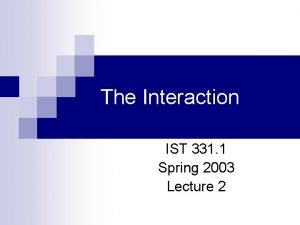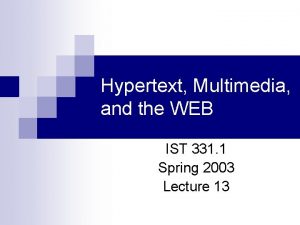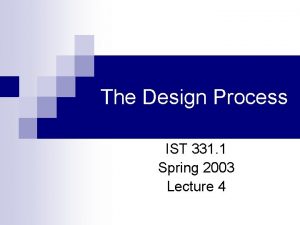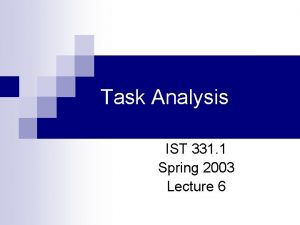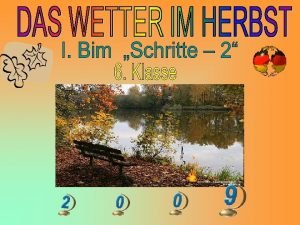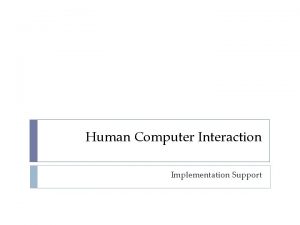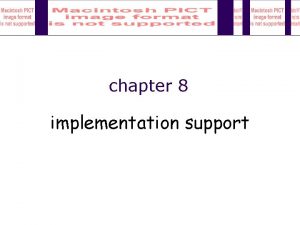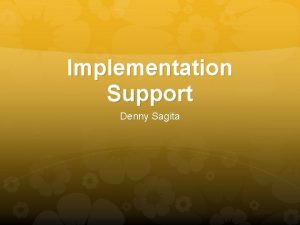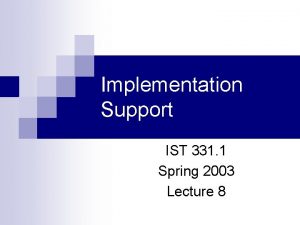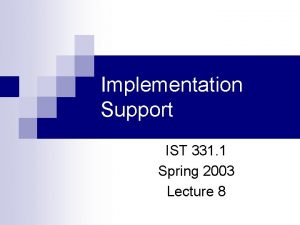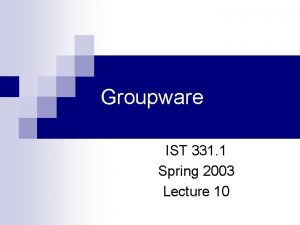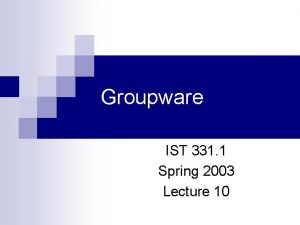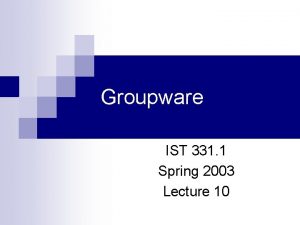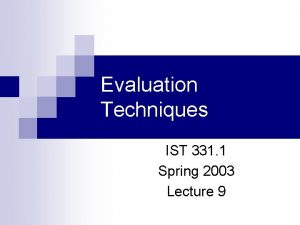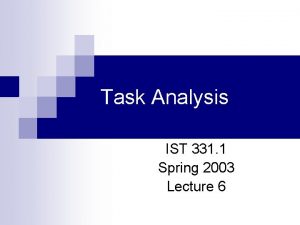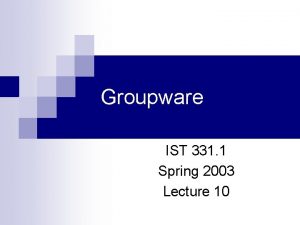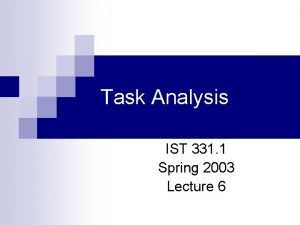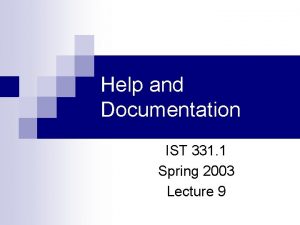Implementation Support IST 331 1 Spring 2003 Lecture














- Slides: 14

Implementation Support IST 331. 1 Spring 2003 Lecture 8

Implementation Support n programming tools ¨ n windowing systems ¨ n n core support for separate and simultaneous user-system activity programming the application and control of dialogue interaction toolkits ¨ n levels of services for programmers bring programming closer to level of user perception user interface management systems ¨ controls relationship between presentation and functionality

Introduction How does HCI affect the programmer? Advances in coding have elevated programming hardware specific interaction-technique specific. Layers of development tools • windowing systems • interaction toolkits • user interface management systems

Elements of Windowing Systems Device independence programming the abstract terminal device drivers image models for output and (partially) input • pixels • Graphical Kernel System (GKS) • Programmers' Hierarchical Interface to Graphics (PHIGS) • Post. Script Resource sharing achieving simultaneity of user tasks window system supports independent processes isolation of individual applications

The roles of a windowing system

Architectures of Windowing Systems 3 possible software architectures all assume device driver is separate differ in how multiple application management is implemented 1. each application manages all processes each application worries about synchronization reduces portability of applications 2. management role within kernel of operating system applications tied to operating system 3. management role as separate application maximum portability client-server architecture

The clientserver architecture

The X Window System Architecture Pixel imaging model with some pointing mechanism X protocol defines server-client communication Separate window manager client enforces policies for input/output: • how to change input focus between applications • tiled vs. overlapping windows • inter-client data transfer

Using Toolkits Interaction objects input and output intrinsically linked

User Interface Management Systems UIMS add another level above toolkits too difficult for non-programmers UIMS as a conceptual architecture separation between application semantics and presentation improves: - portability - reusability - multiple interfaces - customization identifies 3 major roles of interactive system(e. g. , Seeheim): presentation component dialogue control application interface model

Seeheim Model of UIMS Intended user Lexical Syntactic Semantic Presentation component Dialog control Application Interface model (Bypass to allow rapid Semantic feedback) Intended application

Implementation of UIMS Techniques for dialogue control • menu networks • grammar notations • declarative languages • graphical specification • state transition diagrams • event languages • constraints The drift of dialogue control internal control (e. g. , read-evaluation loop) external control (independent of application semantics or presentation) presentation control (e. g. , graphical specification)

Summary Levels of programming support tools: Windowing systems device independence multiple tasks Toolkits programming interaction objects UIMS conceptual architectures for separation techniques for expressing dialogue

State Transition Diagram (STD) NO click on ‘bold’ bold NO click on ‘italic’ italic NO u’line click on ‘underline’ bold italic u’line Compare different interaction objects which could implement this kind of dialog. Use examples from existing toolkits or create a novel interaction object.
 Cast of spring, summer, fall, winter... and spring
Cast of spring, summer, fall, winter... and spring Ist 331
Ist 331 Ist 331
Ist 331 Ist spring design and validation
Ist spring design and validation 01:640:244 lecture notes - lecture 15: plat, idah, farad
01:640:244 lecture notes - lecture 15: plat, idah, farad Summer spring winter fall
Summer spring winter fall Analysisist
Analysisist Es ist kalt es ist kalt flocken fallen nieder
Es ist kalt es ist kalt flocken fallen nieder Es war eine mutter
Es war eine mutter Es ist herbst bunte blätter fliegen
Es ist herbst bunte blätter fliegen Es ist herbst bunte blätter fliegen
Es ist herbst bunte blätter fliegen Zu glauben ist schwer. nichts zu glauben ist unmöglich
Zu glauben ist schwer. nichts zu glauben ist unmöglich What is user support in hci
What is user support in hci It has pixel imaging model with some pointing mechanism.
It has pixel imaging model with some pointing mechanism. Implementation support
Implementation support

